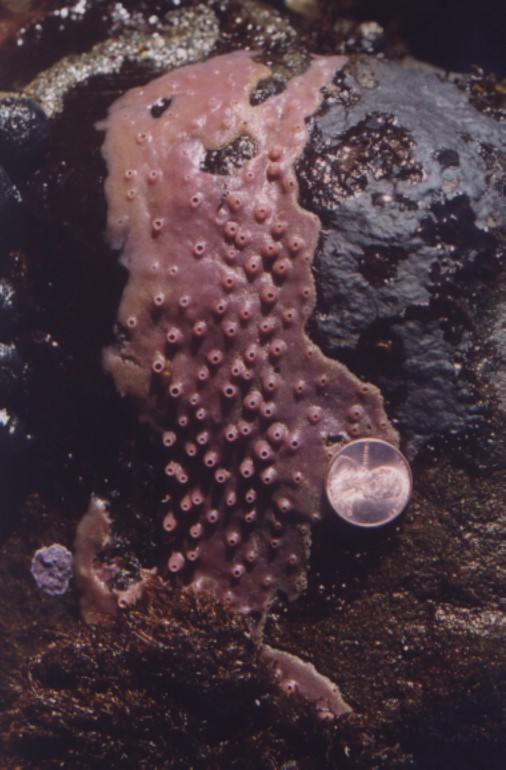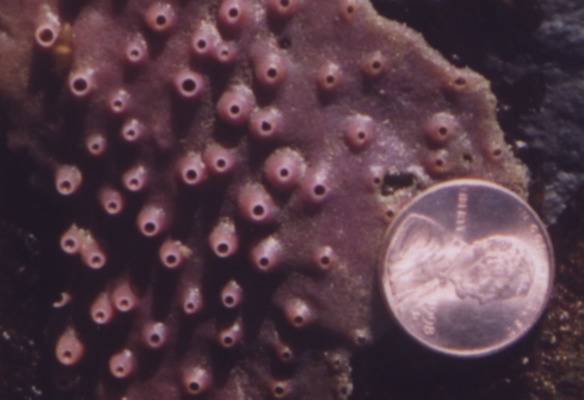Haliclona ecbasis (?) de Laubenfels, 1930Common name(s): |
|
| Synonyms:
May include Haliclona
permollis de Laubenfels, 1961
?Haliclona sp A (Hartman, 1975) |
 |
| Phylum
Porifera
Class Demospongiae Subclass Ceractinomorpha Order Haplosclerida Family Haliclonidae |
|
| Haliclona ecbasis at San Simeon, CA | |
| (Photo by: Dave Cowles May 1999) | |
How to Distinguish from Similar Species: Adocia gellindra has a surface layer that rubs off in flakes. Haliclona close to permollis is very similar but has oxeas 125-175 microns long. Neither of these species have oscula on chimney-like projections
Geographical Range: Worldwide
Depth Range: Mid-intertidal to 50 m depth
Habitat: On undersides of large rocks, in caves, under ledges, on pilings, on mussels on floats in harbors.
Biology/Natural History: The nudibranch Dialula sandiegensis feeds on this sponge. Disassociated cells may reaggregate but have not been seen to form a new sponge. Sexual reproduction is in the spring; produces a parenchymula larva. The genus Haliclona contains more than 200 species which are hard to distinguish, even microscopically by spicules. They may actually be easier to distinguish in life than by spicules.
| Return to: | |||
| Main Page | Alphabetic Index | Systematic Index | Glossary |
References:
Dichotomous Keys:Kozloff 1987, 1996
General References:
Morris
et al., 1980
Scientific Articles:
General Notes and Observations: Locations, abundances, unusual behaviors:

Here is a closeup of the oscula of the Haliclona ecbasis.
Note how they are often, but not always, on chimneys or nipplelike
projections.
Authors and Editors of Page:
Dave Cowles (2005): Created original page